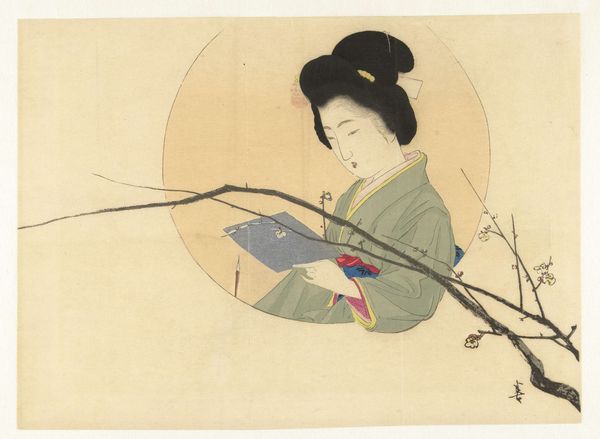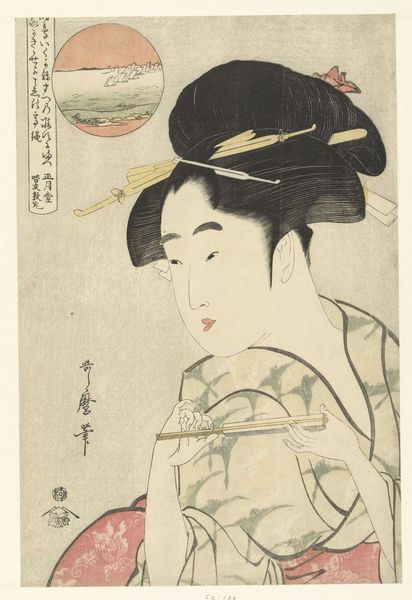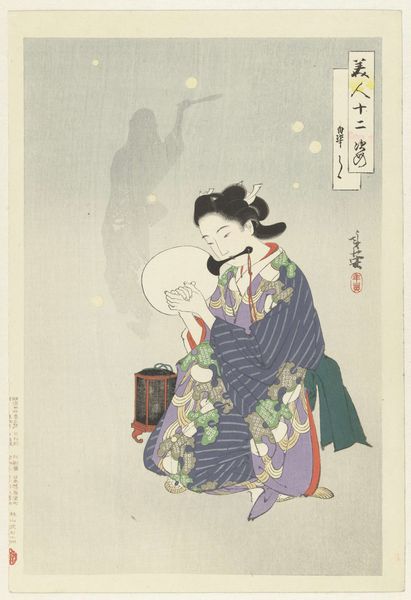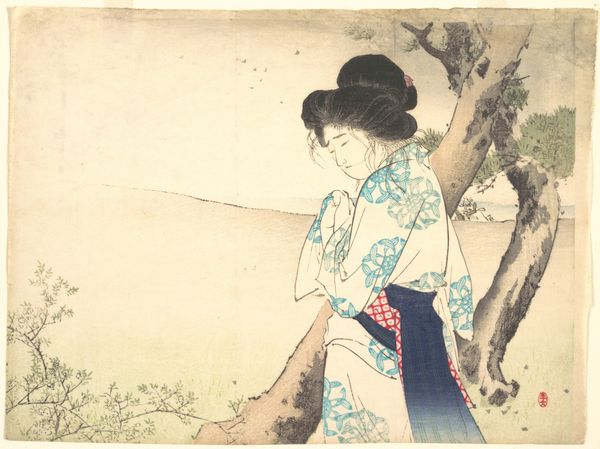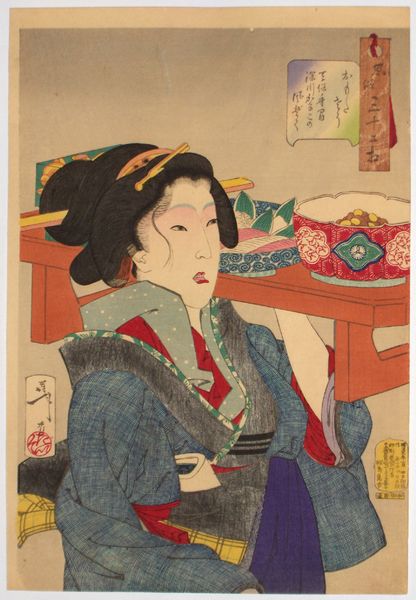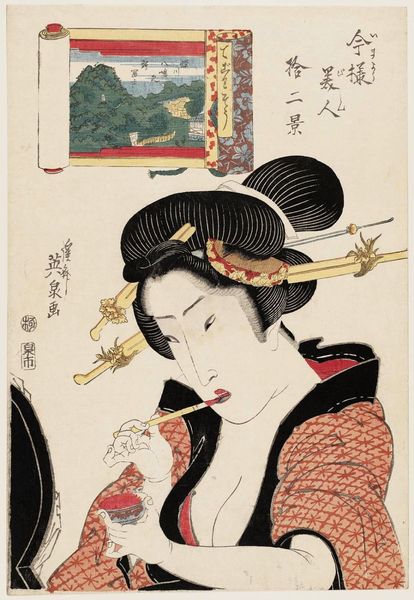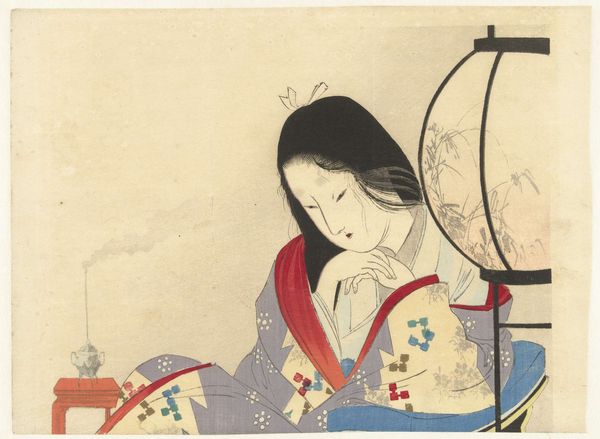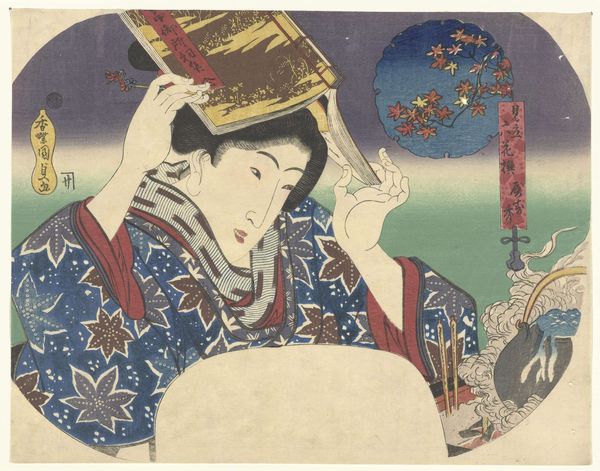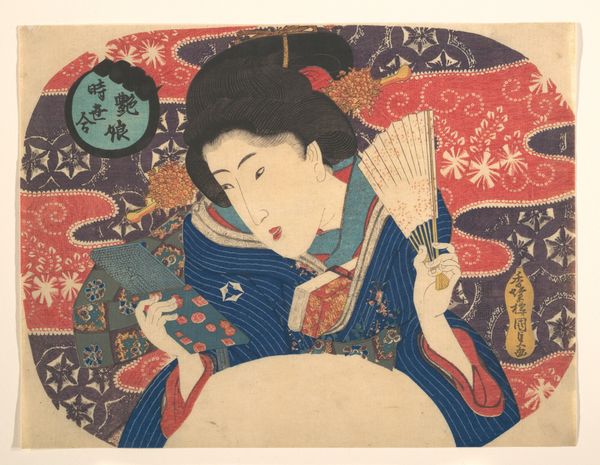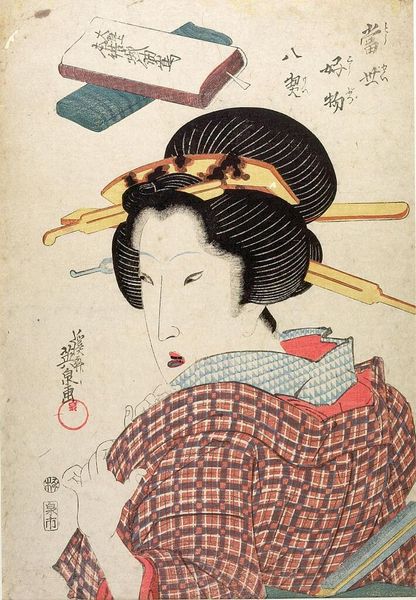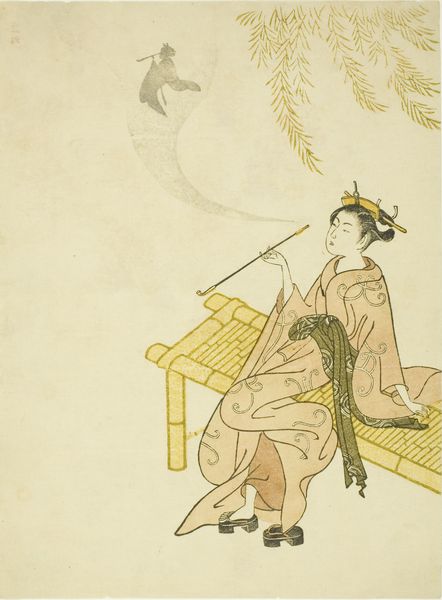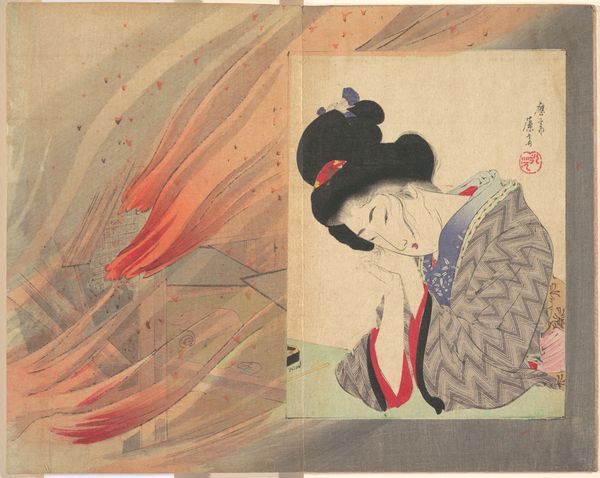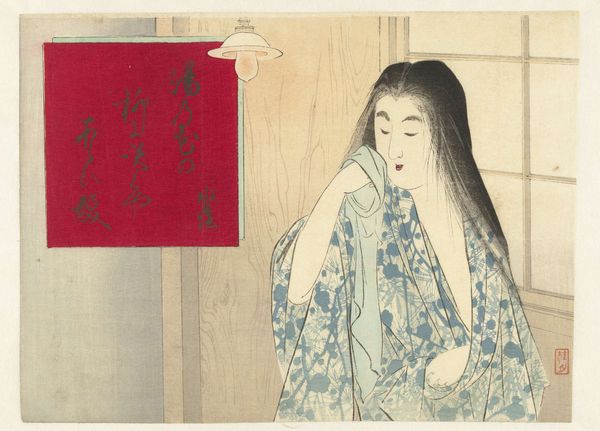
Dimensions: height 223 mm, width 285 mm
Copyright: Rijks Museum: Open Domain
Editor: Here we have "Woman looking at a Bird" by Kajita Hanko, created sometime between 1900 and 1917. It's a watercolor, and the overall effect is so delicate and serene. The woman seems lost in thought, almost wistful. What’s your read on this piece? Curator: It’s fascinating how Kajita Hanko captures a sense of quiet contemplation. This work operates within a rich visual culture. How might we see this image participating in or responding to established genres like Ukiyo-e prints? Consider the evolving role of women in Japanese society at the turn of the 20th century. Does this image reinforce traditional ideals or subtly challenge them? Editor: That’s an interesting point! I guess I hadn't thought about it beyond the surface level. I see her more as an individual than a representation of a social role. Curator: Exactly! And how do you think the institution itself plays a role in forming that understanding? Because ultimately we view art, not from neutral position, but through our current socio-cultural condition. In fact, even Hanko was involved in forming the Nippon Bijutsu Kyokai or the Japan Art Association. His works and art related institutions contributed to establishing Japanesque art at the beginning of the 20th century. Editor: It’s wild to think that the way we perceive her is shaped by how collections choose to show her and similar works of art. Curator: Precisely! We need to examine the structures that condition both production and reception of art. Even the presence of this watercolour illustration hanging in Rijksmuseum is no coincidence, I believe. What might be at play here, historically? Editor: I’ll definitely have to think more about the artwork in relation to art market! This has been quite eye-opening. Curator: I agree. Looking beyond the surface lets us appreciate the complexities embedded within it.
Comments
No comments
Be the first to comment and join the conversation on the ultimate creative platform.
